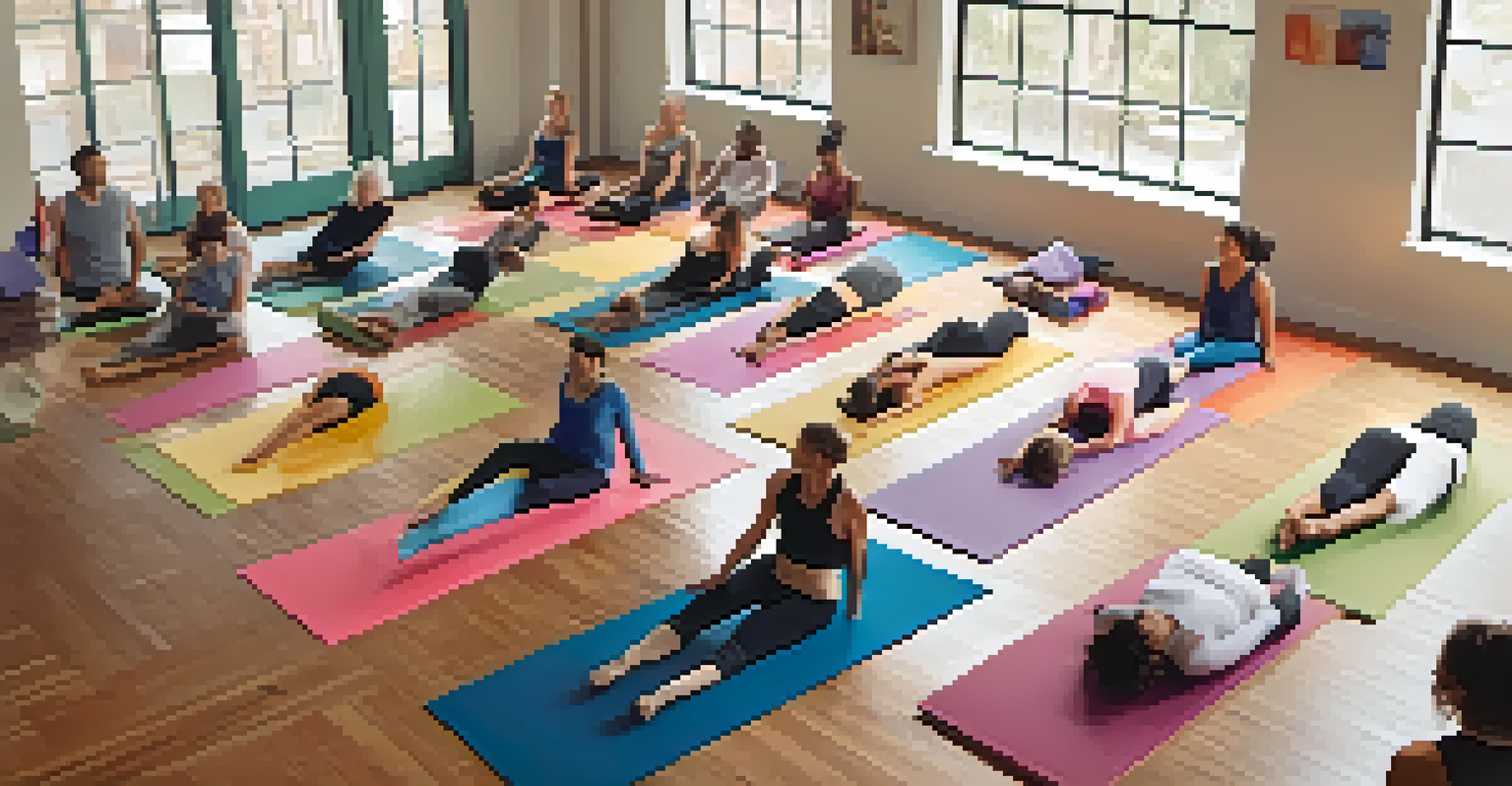Yoga and Communication: Enhancing Social Skills Through Practice

Understanding the Connection Between Yoga and Communication
Yoga is often seen as a physical practice, but its benefits extend far beyond the mat. At its core, yoga promotes self-awareness, which is crucial for effective communication. When you're in tune with your body and mind, you can express yourself more clearly and authentically.
Yoga is the journey of the self, through the self, to the self.
This self-awareness makes it easier to pick up on non-verbal cues from others, such as body language and facial expressions. For instance, during a yoga class, you learn to observe how your body feels in different poses, which can translate to better understanding others' feelings in social interactions.
Ultimately, yoga teaches you to listen—not just to others, but to yourself. This heightened sense of awareness can lead to more meaningful conversations and stronger connections with those around you.
Mindfulness: The Key to Effective Communication
One of the most significant aspects of yoga is mindfulness, the practice of being present in the moment. When you practice yoga, you're encouraged to focus on your breath and the sensations in your body, which cultivates a mindful state. This same mindset can be applied to conversations.

By being fully present during discussions, you're better equipped to listen actively. This means not just hearing words, but truly understanding the emotions and intentions behind them. For example, when someone shares their feelings, a mindful response can be much more supportive than a distracted reply.
Yoga Enhances Self-Awareness
Practicing yoga fosters self-awareness, enabling clearer and more authentic communication.
Mindfulness helps reduce misunderstandings and fosters empathy, creating a safer space for open dialogue. When both parties practice mindfulness, communication becomes more fluid and genuine.
Building Confidence Through Yoga Practice
Many people struggle with self-confidence, especially in social situations. Yoga encourages personal growth and self-acceptance, which can significantly enhance your confidence levels. Each time you master a new pose, you build a sense of achievement that can carry over into your everyday life.
The quieter you become, the more you can hear.
This newfound confidence can make it easier to approach others and engage in conversations. Picture yourself in a yoga class—when you finally achieve a challenging pose, you feel empowered. That same feeling can help you speak up during a meeting or introduce yourself at a social gathering.
As you continue to practice yoga, you may find that your self-assuredness grows. This confidence can help you express your thoughts and feelings more clearly, leading to more impactful communication.
Improving Body Language Through Yoga
Effective communication is not just about words; body language plays a crucial role. Yoga enhances your understanding of body awareness, as each pose requires you to align your body and mind. This awareness translates to how you carry yourself in social settings.
For instance, practicing open and expansive poses can help you adopt a more confident stance in conversations. When you embody confidence through your posture, others are more likely to respond positively. Imagine walking into a room with your shoulders back and head held high—this simple shift can make a world of difference.
Mindfulness Improves Conversations
Being present and mindful during discussions helps you listen actively and understand emotions better.
Furthermore, yoga encourages relaxation, which can help you appear more approachable. When you're calm and collected, your body language signals to others that you're open to communication.
The Role of Breath in Communication
Breath is a fundamental aspect of yoga practice, and it also plays a vital role in communication. When you practice controlled breathing, you learn to regulate your emotions and reactions. This skill can be incredibly beneficial when navigating difficult conversations.
For instance, if you feel anxious before a social event, practicing breath control can help calm your nerves. By taking deep, intentional breaths, you can center yourself and approach interactions with a clearer mind. This clarity allows you to articulate your thoughts more effectively.
Additionally, a calm breath can influence how others perceive you. When you communicate calmly and confidently, it encourages others to respond similarly, fostering a more positive exchange.
Creating Connection Through Group Yoga Practices
Participating in group yoga classes can significantly enhance your social skills. These classes promote a sense of community and shared experience, which can help reduce social anxiety. As you practice alongside others, you naturally engage in non-verbal communication, creating connections without words.
For example, sharing a laugh with a fellow yogi during a challenging pose can break the ice and foster friendships. These interactions build trust and camaraderie, making it easier to engage in more meaningful conversations outside of the class.
Body Language Boosts Communication
Yoga enhances body awareness, allowing you to adopt confident body language that positively influences interactions.
Moreover, group yoga encourages collaboration and support. As you help each other refine poses, you practice essential communication skills like encouragement and constructive feedback.
Applying Yoga Principles to Everyday Interactions
The principles of yoga—such as compassion, patience, and respect—can be applied to everyday communication. By embodying these values, you can create a more harmonious environment in both personal and professional settings. For instance, approaching conversations with kindness can lead to more productive discussions.
Imagine applying the patience you cultivate on the mat during a heated debate. Instead of reacting impulsively, you can take a moment to breathe and respond thoughtfully. This approach not only improves the quality of conversation but also fosters mutual respect.

Ultimately, integrating yoga principles into your communication style can enhance your relationships and create a more positive atmosphere. When you communicate with compassion and understanding, you build stronger connections with others.